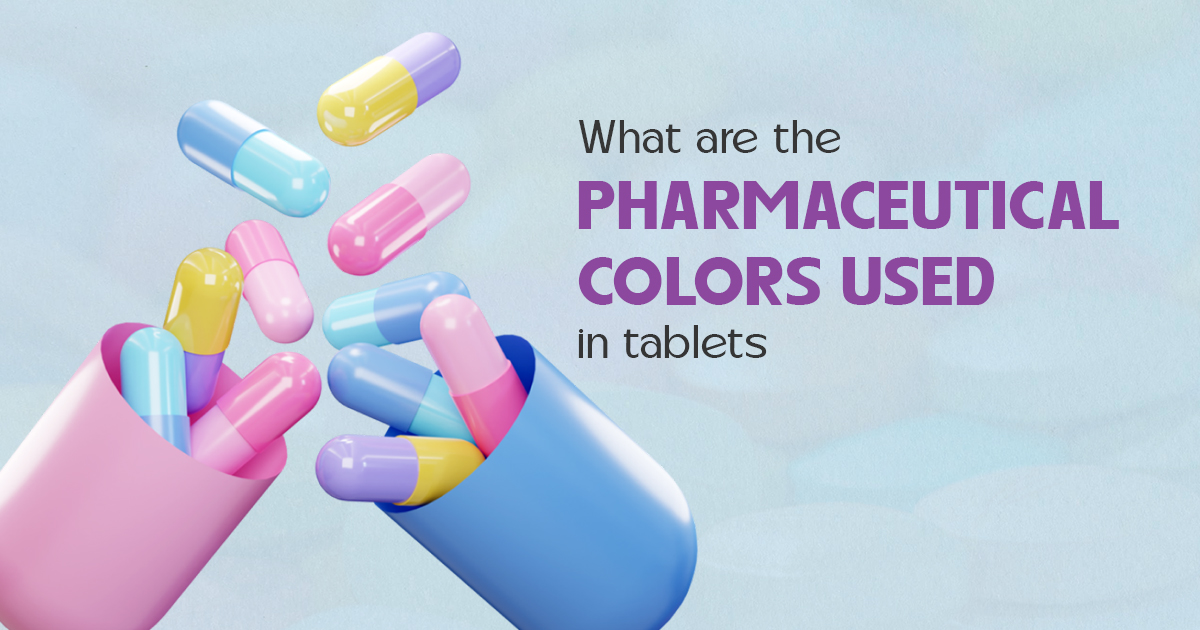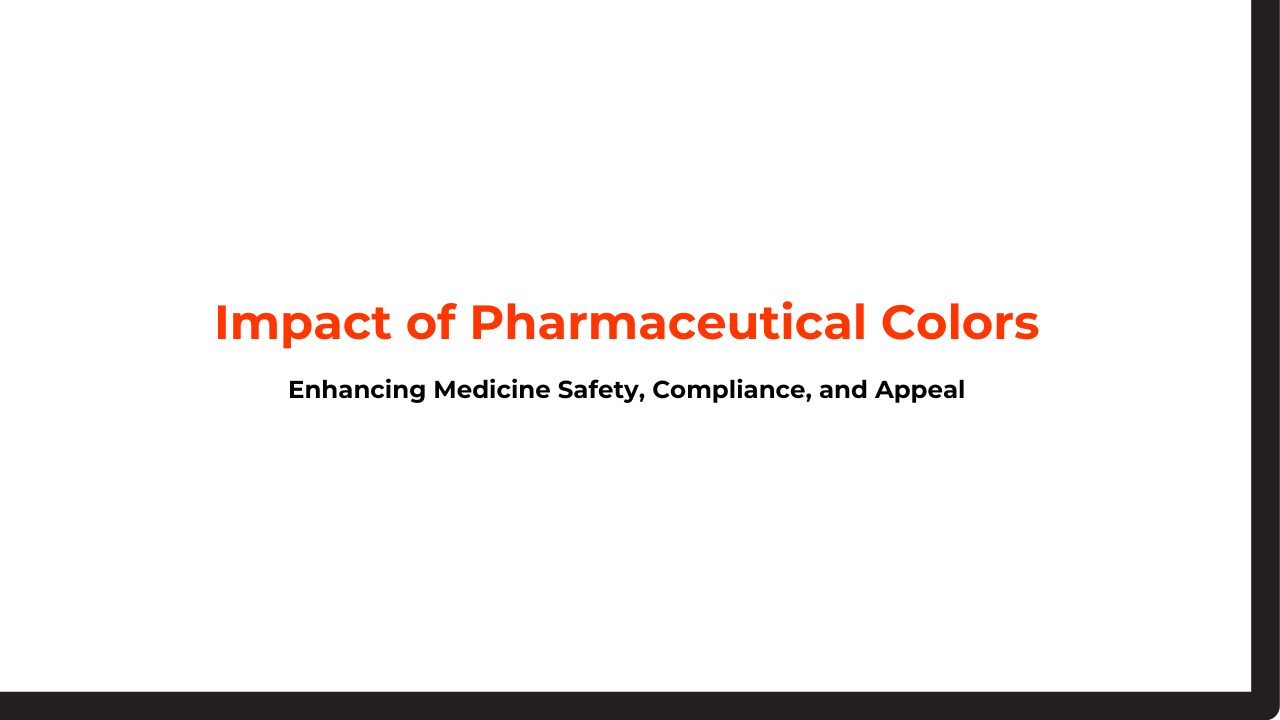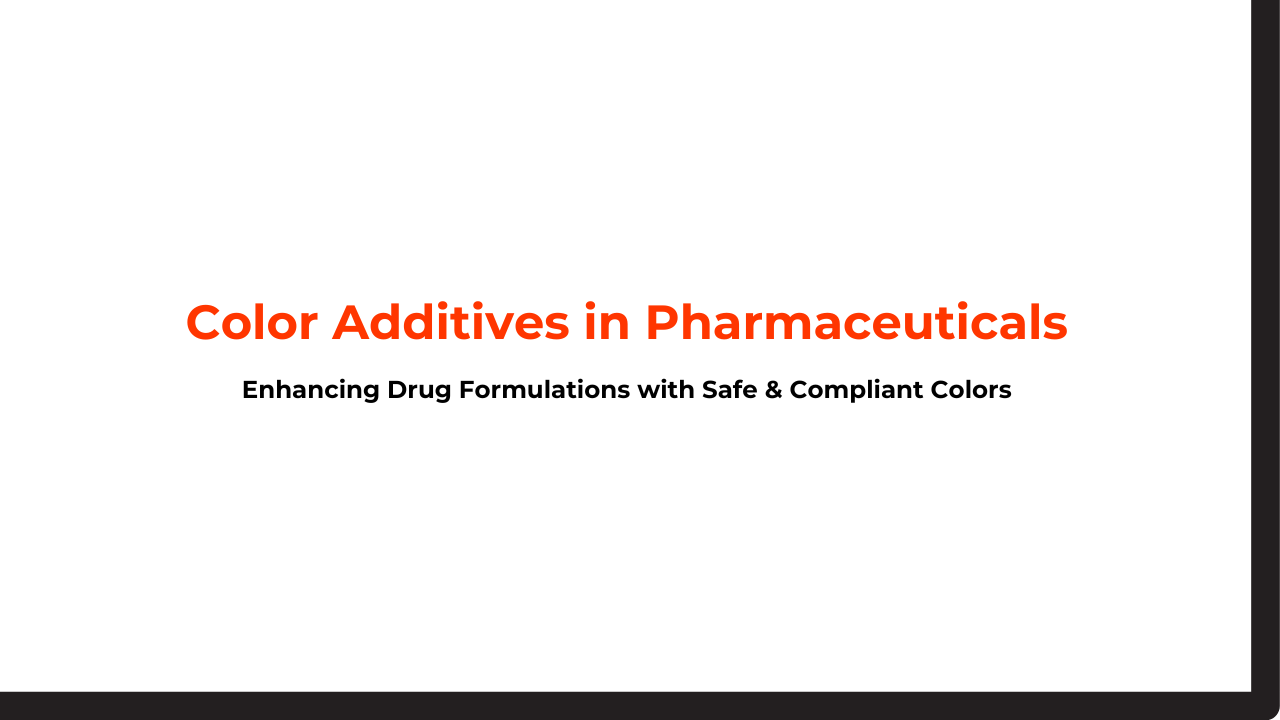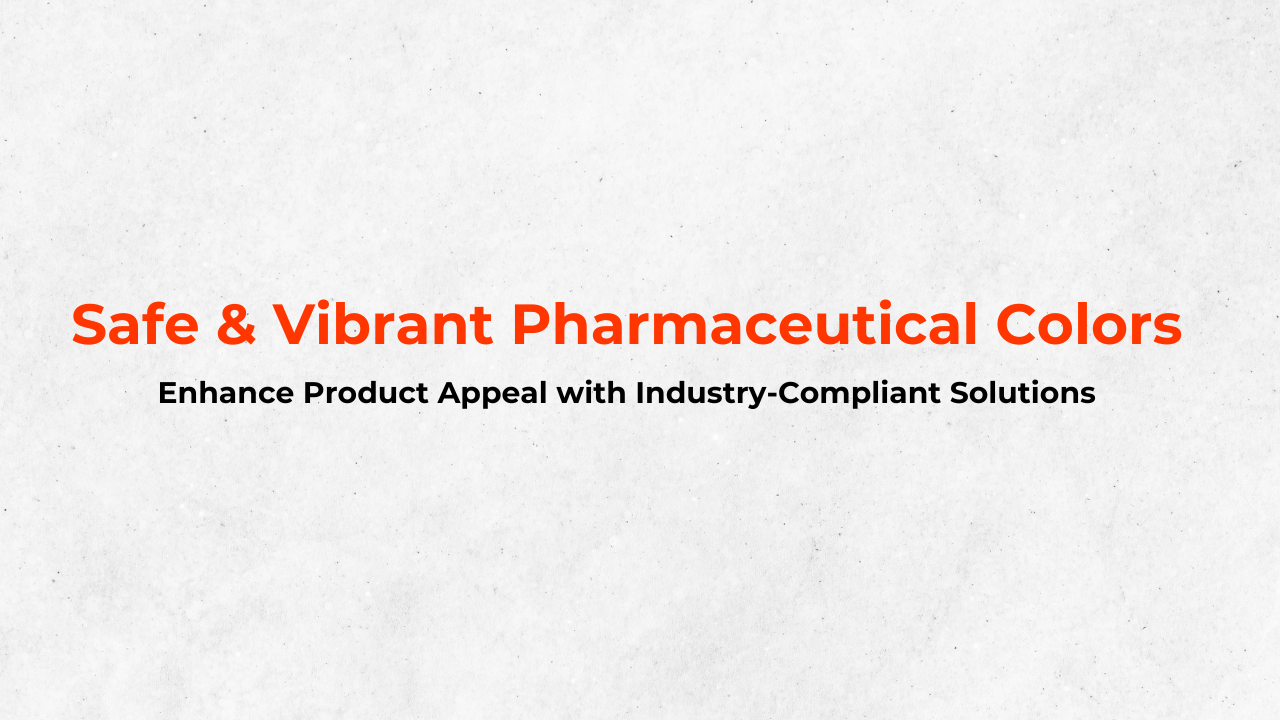Pharmaceutical colors, colorants, or coloring agents play a vital role in improving the visual appearance and making products more attractive and eye-catching to consumers with different colors and hues. Human behavior tends to like products that look more aesthetically pleasing than products with dull colors.
This blog post will discuss the pharmaceutical colors or colorants used in tablet coating.
These pharmaceutical colorants can be both natural and synthetic, making it crucial for businesses to choose the right colors for their products. Businesses looking to achieve perfect matching and the desired product should prioritize choosing superior-quality synthetic dyes and pigments from a reputed manufacturer and exporter of chemical dyestuffs.
However, the US FDA has safety compliance, stringent rules, and regulations on using these color additives in pharmaceuticals to ensure safe human consumption and reduce the chances of drug counterfeiting. Blue, Red, Yellow, White, Brown, and Green are the most popular pharmaceutical colors used widely in the pharmaceutical industry.
Let’s examine the different types of pharmaceutical colors or colorants used in tablet coatings. Here, we start with the basic definition of pharmaceutical colors.
What are pharmaceutical colors?
“pharmaceutical color” refers to any dye or pigment used to impart color to various products, including tablets, capsules, syrups, and other medical devices. Pharmaceutical colors are most commonly used in various industry verticals, drugs, and cosmetics.
Both doctors can identify drugs, prevent drug counterfeiting, and follow prescriptions to prevent drug counterfeiting.
The basics of tablet coating color
Choosing the right color for tablet coating is crucial to ensure product quality and efficacy. The importance of synthetic dyes or pharmaceutical colors in tablet coating can’t be overstated, as they help make tablets more appealing and attractive, enhancing palatability more efficiently. Research shows that patients prefer to choose tablets with proper tablet color coating.
Drug manufacturers need to consider stringent safety rules and regulations to ensure the desired product meets regulatory requirements. Synthetic dyes are widely used in the production of tablet coatings and various pharmaceutical products, including capsule coatings, syrups, and medical devices.
Companies are advised to use high-quality pharmaceutical colors for tablet coating to ensure patient safety and eliminate the chances of drug counterfeiting. Leading color manufacturers like Hridhan Chem Pvt Ltd. produce a variety of synthetic dyes and pigments used in various industrial applications.
When it comes to tablet coating color options, certain things are limited in Japan due to dye regulations, creating boundaries on the use of metal pigments. Meanwhile, the use of pharmaceutical colors derived from iron oxide is widespread and accepted throughout the world.
These iron-oxide colors offer various pigments, hues, and shades, such as grays, beige, yellows, and browns.
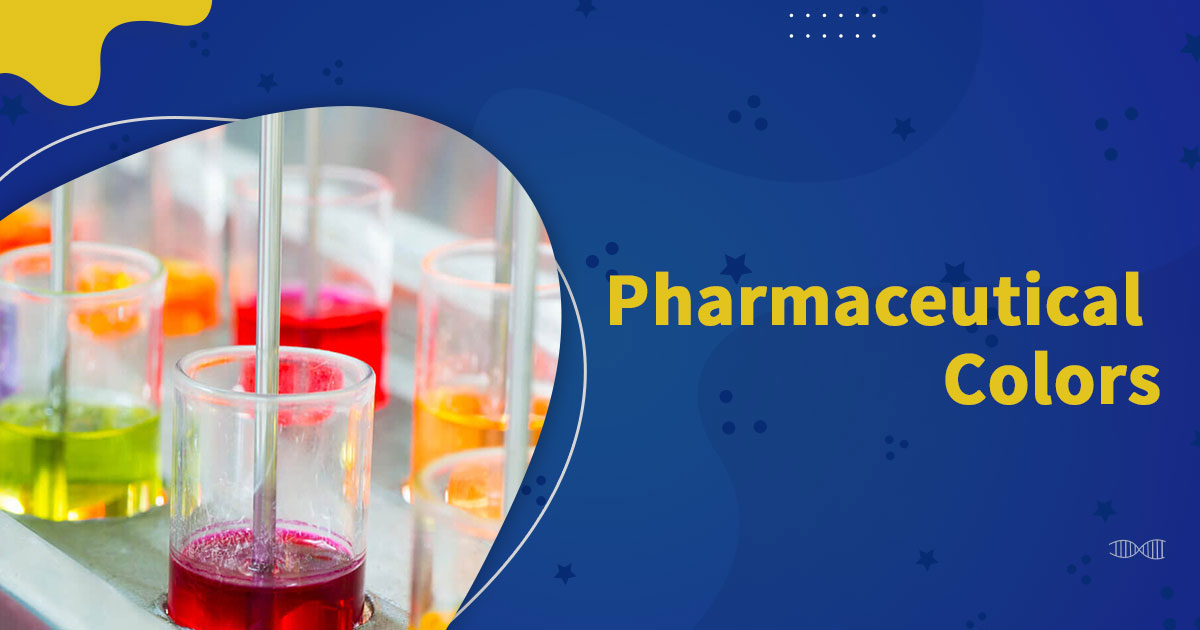
Different types of colors used in tablets
Choosing the right tablet color significantly impacts the patient’s attitude toward taking their medication. It is believed that the color and shade of a garment can communicate a wide range of emotions, culture, and various meaningful connections. White, pink, and yellow tablets, for instance, generally inspire a sense of safety, while red tablet colors can be interpreted differently by different cultures.
Furthermore, the materials used to coat objects are divided into five categories: binder (acacia, gelatin, and cellulose derivatives). Tablet coatings’ colors are sometimes chosen based on the gender, age, and time of day when pills should be taken. Tablets of darker hues are often aligned with nighttime, and tablets of lighter hues with daytime.
The color of a tablet coating varies depending on whether it is consumed during the day or night. For cold remedies, lighter coloring agents are used during the day, and darker coloring agents are used during the night.
Uses of Pharmaceutical Colors to Enhance Patient Consumption
Generally, medications have an unpleasant taste, making it crucial for pharmaceutical companies to use high-quality pharmaceutical colors and sugar-based film coating in the production of medical dosage forms. Through film coating and attractive tablet coating colors, pharmaceutical manufacturers can enhance patient safety and human consumption.
The coloring agents in pharmaceuticals are used to improve visual appearance, enhance palatability, improve branding, and reduce drug counterfeiting to a greater level. Coloring agents are crucial in increasing the overall visual appearance of products in the pharmaceutical industry. For patients to consume your tablets with good perceptions, safety, and efficacy, they must be developed based on the flavor and color they associate with additives.
Different pharmaceutical dosage forms use a wide range of natural and synthetic coloring agents. Synthetic dyes and mineral pigments are the most common dyes used to get the perfect color match.
The importance of pharmaceutical colors in tablet coating can’t be neglected, as they directly influence human perception and the brand of your product. However, the FDA has stringent limitations on using these color additives to ensure patient safety.
Conclusion
The importance of tablet coating color can’t be overlooked. It plays an essential role in more efficiently achieving the desired color and shape based on film and sugar coating. Choosing the right color for tablet coating directly affects patients’ attitudes and how they consume it.
We are a reputed manufacturer and exporter of premium-quality synthetic colors used in pharmaceuticals, food, and cosmetics. Contact us today for more information about the different types of pharmaceutical colorants used for tablet coating and the best colors for tablet coating.

